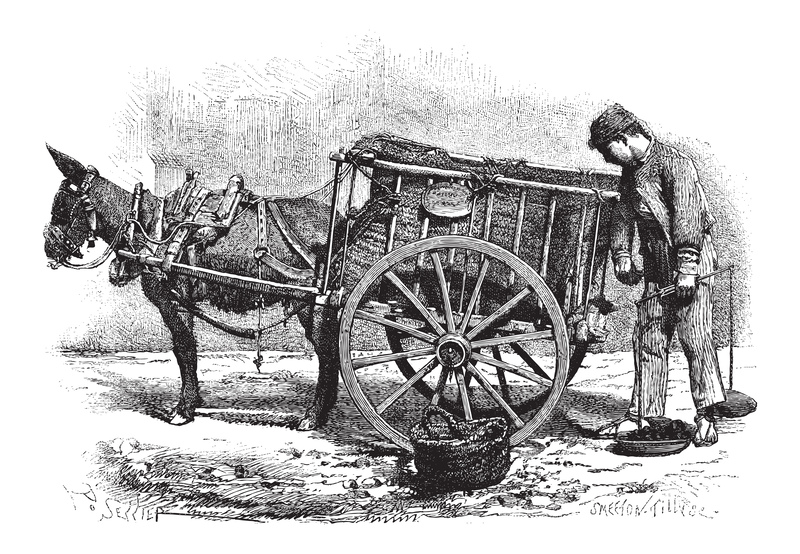Charting a Path Away from Harmful Plastics: A Comprehensive Guide
Harmful plastics have been part of our daily lives for decades, but their lasting negative impact on health, wildlife, and the environment is now impossible to ignore. As society awakens to these dangers, moving toward a plastic-free future has become a pressing goal. This article will comprehensively explore how individuals, communities, and industries can take concrete steps toward reducing, replacing, and eliminating harmful plastics from daily life.
Understanding the Problem: Why Are Harmful Plastics So Damaging?
For decades, plastics revolutionized convenience in packaging, technology, medicine, and industry. However, the durability that once made them attractive now causes widespread problems. Plastic pollution impacts oceans, wildlife, human health, and even climate. Addressing these concerns is critical to protecting our planet for future generations and charting a path away from toxic plastic dependency.
The Impact of Harmful Plastics on the Planet
- Environmental Damage: 8 million tons of plastic end up in our oceans every year, choking marine life and contaminating food webs.
- Health Risks: Microplastics enter the food chain, raising concerns about toxicity for animals and humans alike.
- Long Decomposition Times: Some plastics take over 400 years to decompose, clogging landfills and landscapes for generations.
- Greenhouse Gas Emissions: Plastic manufacturing is energy intensive, contributing significantly to climate change.
Recognizing these harmful effects is the first step toward a healthier, plastic-free future. But understanding the full scope of the issue is key to progress.

Industry Insights: Types of Harmful Plastics and Where They're Found
Not all plastics are created equal. When charting a path away from harmful plastics, it's vital to understand the most problematic varieties. Here are the worst offenders:
- Single-Use Plastics: Disposable bags, straws, bottles, and cutlery are used for minutes, but last for centuries.
- Polyvinyl Chloride (PVC): Found in pipes, cling films, and toys, PVC releases dangerous chemicals during its lifecycle.
- Polystyrene (Styrofoam): Used in takeout containers and packaging, it easily breaks down into microplastics and persists in the environment.
- Microplastics: Tiny plastic fragments (under 5mm), often from cosmetics or the breakdown of larger items, contaminate water and food globally.
Identifying and avoiding these plastics is essential for anyone aiming to protect the environment and their own health.
Exploring Safe Alternatives to Harmful Plastics
The good news is that sustainable materials are constantly being developed and are more accessible than ever. Let's look at what you can use instead of toxic plastics.
Popular Eco-Friendly Alternatives
- Bioplastics: Made from cornstarch or sugarcane, these biodegradable plastics are ideal for compostable packaging and utensils.
- Glass & Stainless Steel: Reusable water bottles, food containers, and straws made from these materials offer excellent longevity and safety.
- Bamboo: Fast-growing and renewable, bamboo is an excellent substitute for cutlery, toothbrushes, and kitchenware.
- Paper & Cardboard: Responsibly sourced paper can replace plastic food wraps, plates, or shopping bags.
- Silicone: Heat-resistant and sturdy, silicone is ideal for food storage and bakeware, providing a reusable choice free from toxic chemicals.
Switching to these alternatives isn't just an environmental gesture--it's an investment in your health and the planet's future.
Reducing Harmful Plastics in Your Daily Life: Practical Steps
Every person can make a difference. Here's a practical roadmap for individuals determined to reduce plastic waste and adopt safer habits:
1. Audit Your Plastic Consumption
- Make a list of daily, weekly, and monthly purchases that contain plastic.
- Identify opportunities to swap single-use items for reusable alternatives.
2. Opt for Reusable Products
- Replace plastic bags with reusable cloth totes.
- Invest in a stainless steel or glass water bottle instead of buying bottled water.
- Use food containers made from glass or steel instead of single-use wrappers.
3. Shop Smart and Support Sustainable Brands
- Choose brands that use compostable or recyclable packaging.
- Buy in bulk to limit packaging waste.
- Favor local markets and shops that minimize plastic use.
4. Properly Recycle and Dispose
- Learn your local recycling rules--never wishcycle!
- Clean and sort plastics before recycling to avoid contamination.
- Take e-waste, batteries, and hazardous plastics to dedicated recycling facilities.
5. Educate and Advocate
- Share your knowledge with others to amplify change.
- Volunteer for local clean-ups or sustainability campaigns.
- Support policies and organizations focused on reducing plastic dependence.
Remember: Even small lifestyle changes have a ripple effect when more and more people take part.
Collective Efforts: How Communities and Industries Can Lead Away from Harmful Plastics
While individual actions are crucial, systemic change comes when communities, governments, and industries work together for a future free from dangerous plastics.
Government Policies
- Bans on Single-Use Plastics: Many countries are restricting shopping bags, straws, and polystyrene packaging.
- Extended Producer Responsibility (EPR): Manufacturers are held responsible for the entire lifecycle of their products--including end-of-life disposal.
- Investment in Recycling Infrastructure: Improved recycling systems increase plastic recovery and reuse rates.
Corporate Responsibility
- Redesigning Packaging: Innovating with compostable, biodegradable, or reusable materials reduces plastic pollution at the source.
- Setting Public Goals: Companies like Unilever, Coca-Cola, and IKEA have pledged ambitious targets to phase out harmful plastics.
- Supporting Take-Back Programs: Brands are setting up collection points and incentives for customers to return used packaging.
Consistent efforts by both public and private sectors are essential in charting a path away from harmful plastics on a global scale.
Innovation and Technology: Paving the Way Beyond Plastic Dependency
Science and technology are at the forefront of tackling the harmful plastic crisis. Let's explore some of the innovative breakthroughs leading us into a new era:
- Advanced Biodegradable Materials: From algae-based plastics to mushroom packaging, the next generation of materials focuses on rapid decomposition and circularity.
- Plastic-Eating Enzymes: Researchers have developed enzymes and bacteria capable of breaking down PET plastics in a matter of days.
- Closed-Loop Systems: Industrial composting, plastic upcycling, and zero-waste supply chains aim to keep all materials in use as long as possible.
- Smart Packaging: Edible and dissolvable wrappers are now used in some food and personal care products.
Emerging technologies promise to reduce our reliance on traditional petro-based plastics and transform waste management forever.
Tackling Microplastics: Protecting Health and Ecosystems
Microplastics--tiny fragments often invisible to the naked eye--represent one of the newest and most insidious threats. They accumulate in oceans, soil, air, and even human bodies, with unknown long-term effects. Here's how they can be addressed:
- Ban Microbeads: Avoid personal care products containing plastic microbeads--these tiny plastics disrupt aquatic life and contaminate drinking water.
- Laundry Solutions: Use filters or special laundry bags to capture synthetic fibers shed from clothes.
- Research and Innovation: Support ongoing studies on the spread and impact of microplastics.
Understanding and mitigating microplastic pollution is crucial for those intent on charting a path away from harmful plastics in every sphere of life.
Overcoming Challenges in the Transition from Harmful Plastics
While moving toward a future without harmful plastics is inspiring, it's not without obstacles:
- Cost: Alternatives to plastics can be more expensive in the short term.
- Convenience: Plastic is ubiquitous and hard to avoid, especially in food and health care.
- Knowledge Gaps: Consumers may lack information on choosing safer materials or how to dispose of them properly.
- Regulatory Variation: Laws around plastics differ widely between regions, creating inconsistency.
Collective resilience, innovation, and education are the antidotes to these challenges.

Charting the Future: A Vision of a World Without Harmful Plastics
Imagine a future where shopping, dining, and even shipping are plastic-free; where oceans teem with life, not trash; where our food and water are uncontaminated by synthetic debris; and where waste becomes a resource, not pollution.
This vision becomes reality when we treat every action--no matter how small--as a step toward broader, systemic change. From thoughtful consumer choices to political advocacy, the path away from harmful plastics belongs to us all.
Together, Let's Chart a Path Away from Harmful Plastics
In conclusion, charting a path away from harmful plastics is not simply a personal decision--it is a rallying call echoed by concerned citizens, businesses, and governments globally. By embracing alternatives, demanding stronger policies, and fostering innovation, we create a cycle of positive change that will safeguard the earth for generations to come. Now is the time to take your first step away from harmful plastics and toward a cleaner, safer, and brighter world.
Are you ready to be a part of this critical movement? Start today--reduce, reuse, replace, and reinvent your relationship with plastic for good!